Heading into the biking season, you might be wondering which tires are the best match for your adventures, right?
Choosing the perfect mix of tire width, tread, casing, and just the right amount of air pressure seems like a bit of a maze.
But hey, let’s not get bogged down by the details – it’s actually simpler than it looks! I’ve managed to simplify all that tire tech into five key points, helping you make choices that vibe with how you ride and the terrains you’re eager to tackle.
Consider this guide your trusty sidekick in the quest for tire perfection.
Let’s dive into a little backstory. I’ve been on this tire-testing journey longer than most, diving deep into the nitty-gritty of what makes a tire tick. With a solid background in the science of it all, I’ve always been fascinated by how much of a difference the right tire can make.
Back in 2006, when I first started exploring tire performance, the scene was quite different. Road racers were all about those narrow 20 or 23 mm tires, inflated to what now seems like an unimaginable 125 psi or more, a stark contrast to the slick tires used for smooth gravel.
And in the gravel racing world? There was a heated debate over whether 25 mm or 28 mm tires were the secret to gravel glory. Seems a bit quaint by today’s standards, doesn’t it?
My early findings were quite the eyebrow-raisers. It turned out that on smooth roads, 25 and 28 mm tires could actually outpace their thinner counterparts.
And for gravel?
Bigger was definitely better, way beyond the 28 mm mark.
The real kicker was discovering that ultra-high pressures weren’t the key to faster rolling speeds.
This flipped quite a few assumptions on their head, challenging what many thought they ‘knew’ about tire performance. It’s always fun to shake things up a bit, don’t you think? Perhaps experimenting with a tubeless setup or trying out different tire sizes.
How To Choose Gravel Tires: Embrace the Widest Tire Your Bike Can Handle For Dirt and Gravel
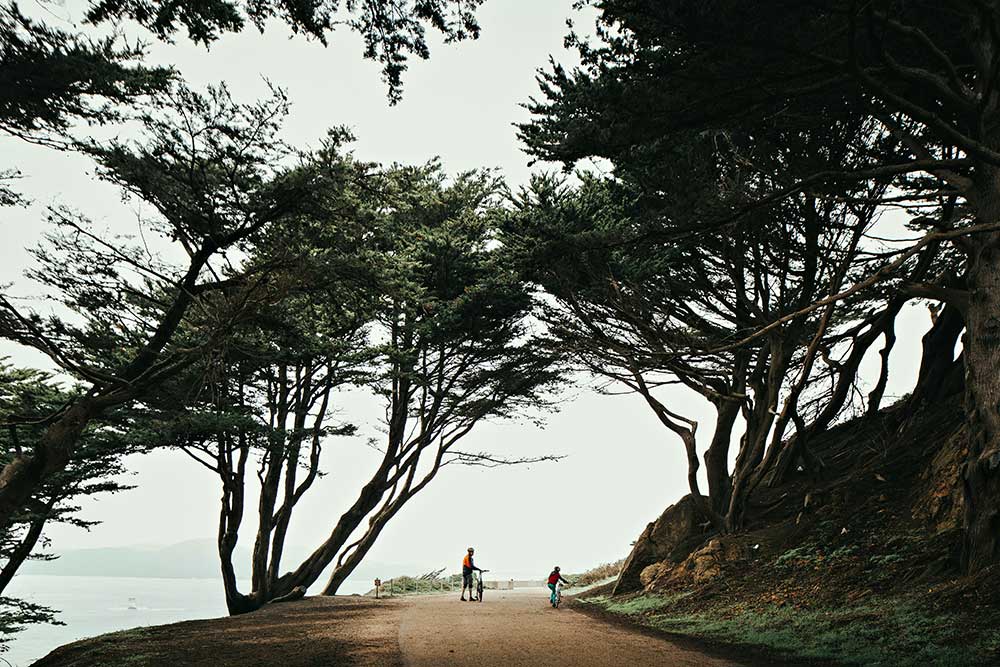
When it comes to gravel biking, one golden rule to follow is: go as wide as your frame allows.
It’s like giving your bike an all-access pass to diverse terrains, from smooth paved roads to the rugged, unpredictable paths less traveled.
But why wider, you ask?
It’s all about the cushioning.
Wider tires can be run at lower pressures, offering a smoother ride over bumps and less jarring from the rough stuff.
Plus, they give you a larger contact patch with the ground, which translates to better grip when you’re navigating through loose gravel or tackling a slippery slope.
Now, before you rush to fit the chunkiest tires you can find, it’s essential to check the maximum tire clearance your bike frame and forks offer.
This varies significantly between models and brands, so a quick peek at your bike’s specs or a chat with your local bike shop can save you from a tire-size mishap, especially if you’re considering moving to 700c wheels.
Remember, a tire that’s too wide can lead to rubbing on your frame or fork, and nobody wants that kind of friction on a ride.
The benefits of going wide are plentiful. Not only does it enhance comfort, but it also boosts confidence.
There’s something inherently reassuring about rolling on beefier tires when you’re miles away from civilization, dancing on a trail littered with sharp rocks and unpredictable turns.
They absorb more of the trail’s irregularities, letting you focus on the joy of the ride rather than bracing for the next jolt.
But it’s not just about comfort; it’s about capability.
Wider tires open up new routes and allow for more adventurous riding.
They encourage you to say ‘yes’ to that sketchy-looking trail you’d usually bypass, knowing your tires can handle the challenge. It’s about transforming your gravel ride into an exploration, where each ride is a mini-adventure waiting to unfold.
Gravel Tire Casings: Suppleness is Key
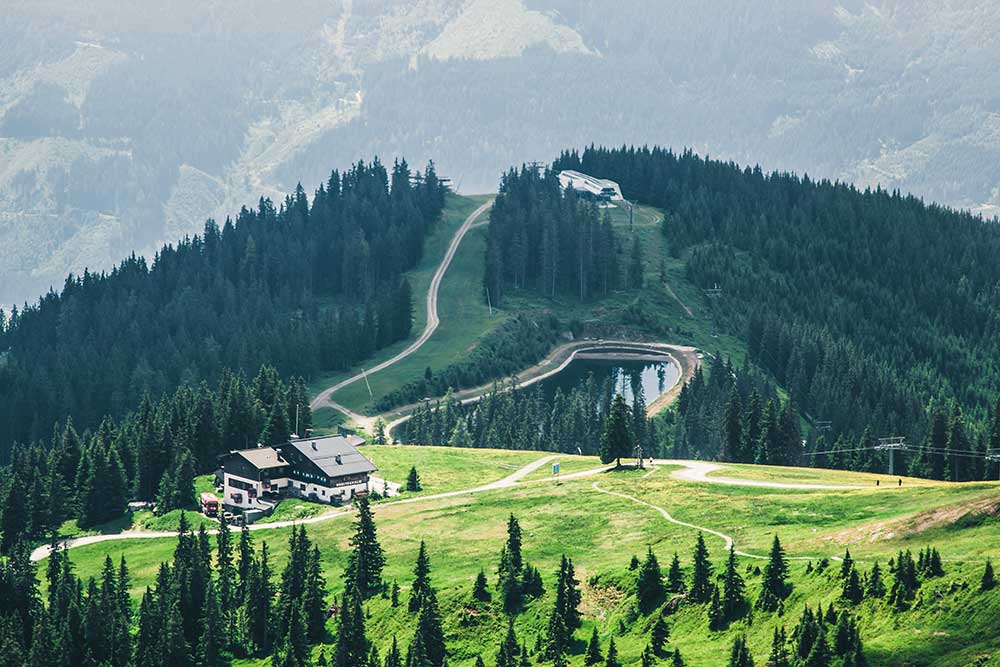
Now, let’s talk casings – not the legal kind, but the kind that wraps around your gravel tire.
A supple casing is like the secret sauce that makes a good gravel tire great.
It’s all about how the tire conforms to the terrain, giving you that buttery smooth ride over jagged rocks and bumpy roads.
Think of it as the difference between riding with a cushion of air versus a solid wheel, or a tubeless setup that melds the best of both worlds.
You want your bike to glide over obstacles, not bounce off them.
But here’s the catch – the more supple the tire, the more vulnerable it might be to sharp objects looking to ruin your day with a puncture. It’s like wearing a silk shirt to a bramble bush party.
So, you’ve got to strike a balance between knob and slick surfaces. If your usual route is more forgiving, indulge in the luxury of a super supple tire. But if you’re regularly duking it out with thorny trails, consider a tire that’s still compliant but has a bit of armor.
The bottom line? Don’t just pick a tire because it’s rugged or because it’s the smoothest ride in the showroom.
Consider where you ride and choose a casing that offers the right mix of comfort and durability for your gravel escapades.
Tire Tread: The Great Debate, Is Worth Being The Fastest On Gravel?
When it comes to gravel tires, the tread pattern sparks more debates than pineapple on pizza.
But here’s a slice of advice: don’t sweat the small stuff.
For most gravel riders, a dual-purpose knobby tire hits the sweet spot. It’s like the Swiss Army knife of treads, ready for whatever the trail throws your way.
Imagine you’re at a buffet. On one side, there’s smooth tarmac, and on the other, a salad of rocks and dirt. A knobby tire is your all-you-can-eat pass, giving you the grip you need in the dirt without bogging you down on the road.
Sure, it’s not the fastest tire on the pavement, but it won’t leave you slipping and sliding when the going gets rough, thanks to its lower rolling resistance.
So, when you’re eyeing up your next set of tires and find yourself puzzled by the plethora of patterns, lean towards a versatile knobby. It’s the worry-free choice that lets you focus on the joy of the ride, not the intricacies of your tread.
How to Pick the Right Width: Fine-Tuning with Pressure (What Is The Perfect Tire Width)
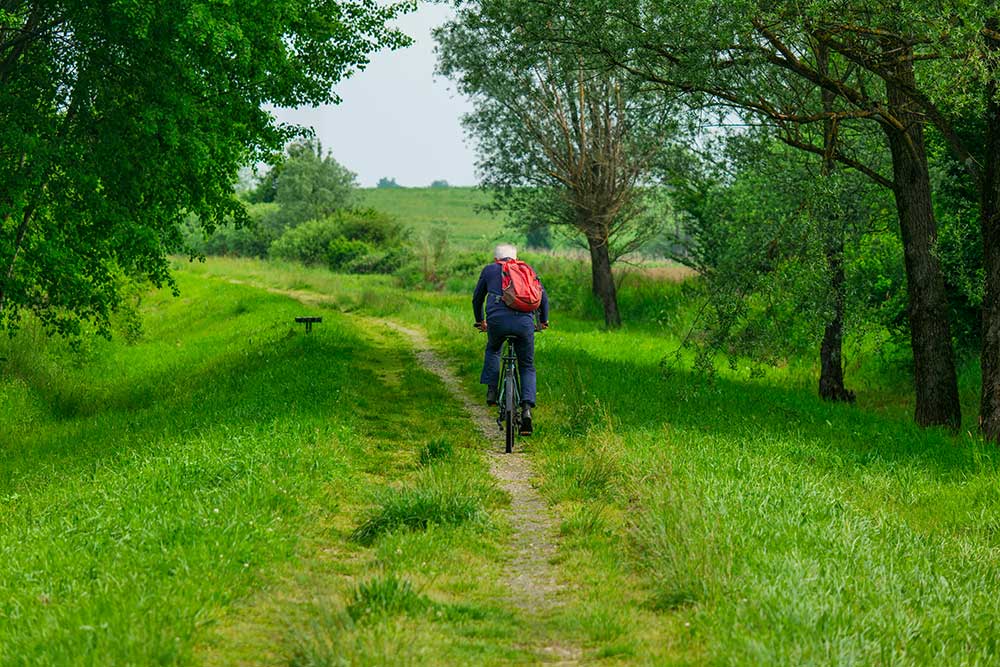
Think of your tire pressure as the DJ at your gravel party—it sets the vibe. Get it right, and you’re in for a smooth, groovy ride. Too high, and you might as well be dancing on stilts.
Too low, and you’re sinking into the dance floor. The trick is to start low and adjust up until you hit that sweet spot where comfort meets efficiency.
Lower pressures let your tires hug the terrain, giving you that plush feel and grip when the trail gets wild. It’s like having an extra layer of suspension. But go too low, and you risk pinch flats or a sluggish ride. Picture trying to sprint in sand; that’s a no-go.
A good starting point?
Try around 20-30 PSI and tweak from there based on your weight, the bike’s load, and the trail’s mood.
And remember, gravel riding isn’t just about speed—it’s about the experience, the scenery, and the adventure. So let your tire pressure dial in that perfect ride feel, and enjoy the journey.
Best Gravel Tires: Handling Over Speed
When it’s gravel time, think less about speed and more about how your bike feels.
It’s like choosing between a sports car and an off-road vehicle for a rugged mountain drive.
Sure, the sports car is fast, but the off-roader gives you the control and confidence to enjoy the journey.
Wheel size plays a big role in this.
- Smaller wheels can make your bike feel nimble and quick to respond, like it’s ready to dance through the trickiest of trails.
- Larger wheels, on the other hand, might roll over obstacles more smoothly, giving you a sense of stability and ease, especially when the terrain gets tough.
So, before you get caught up in the quest for speed, think about what you want from your gravel rides.
Do you crave the agility to weave through tight spots, or do you prefer the calm of a steady cruiser?
Let your wheel size choice reflect the experience you’re after, and you’ll find your gravel rides more rewarding.
Dirt and Gravel: Confidence in Your Tires
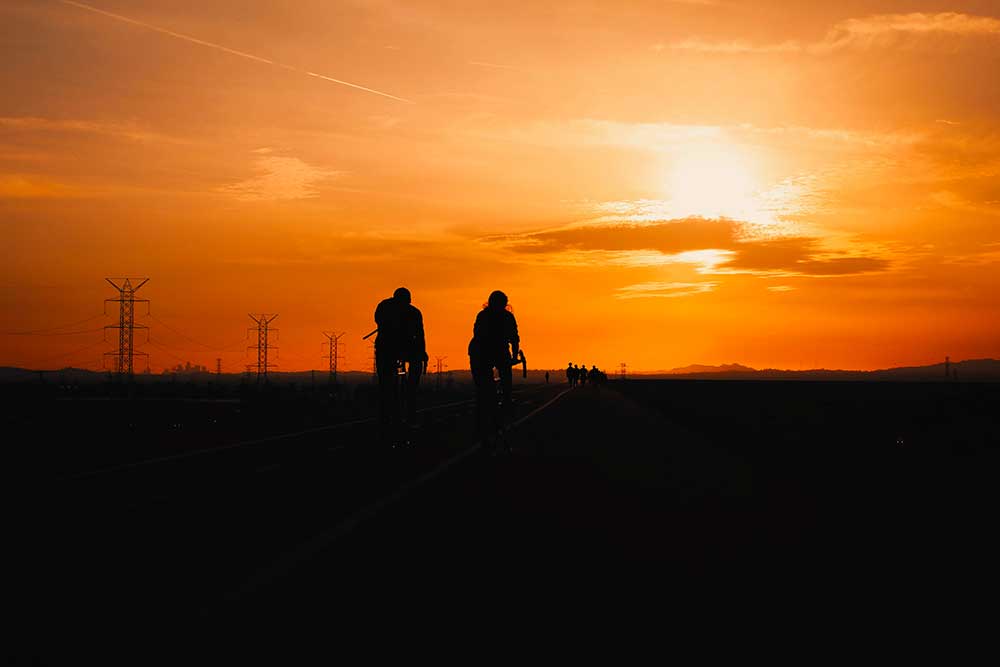
Imagine you’re in the thick of a race, heart pounding, legs pushing the limit. The last thing you want is doubt—especially about your tires. Choosing the right tires isn’t just about performance; it’s about peace of mind.
You want to be in the zone, focused on your ride, not fretting over whether your tires can handle the next curve or rocky descent.
Think of your tires as trusty sidekicks on your gravel adventures. They’re your first line of defense against the unpredictable elements of dirt and gravel paths.
When you’ve got tires you trust, it’s like they disappear beneath you, letting you merge with the bike and the trail. This confidence allows you to push harder, ride faster, and, most importantly, enjoy the journey without the nagging worries.
So, when you’re picking your next set of gravel tires, think beyond the specs.
Consider how they make you feel.
Do they give you the confidence to tackle that steep, loose climb?
Can they shrug off a sharp-edged rock without flinching?
If the answer is yes, you’ve found your match. Because in the heat of the moment, on the dirt and gravel, confidence in your gear is everything.
Puncture: Protection for Peace of Mind
There’s nothing quite like the sinking feeling of a puncture when you’re miles from anywhere, deep in your gravel groove. It’s the party pooper of the gravel world. That’s where puncture protection comes in, like a trusty shield for your adventures. It’s about making those “oh no” moments a rarity.
But here’s the kicker: not all puncture protection is created equal. Some tires boast a fortress-like defense that can feel like you’re rolling on tank tracks—safe, but sluggish. Others offer a lighter touch, a compromise that keeps the ride sprightly without leaving you vulnerable.
So, how do you choose? It’s a bit like picking the right armor for a battle.
You wouldn’t wear a full suit of armor to a skirmish, right? Consider the terrain you frequent.
Is it littered with sharp rocks and thorns, or are you cruising on more forgiving paths? Tailor your puncture protection to your needs, and you’ll strike that perfect balance between safeguarding your ride and keeping the joy in your pedal stroke.
Tire Pressure: The Unsung Hero of Gravel Riding

In the world of gravel riding, tire pressure isn’t just a setting—it’s an art form.
It’s the subtle tweak that can elevate your ride from good to legendary.
Much like the secret ingredients in a master chef’s recipe, the perfect tire pressure is often a closely guarded secret among the pros.
Why? Because nailing that ideal pressure can be the slingshot that zooms you past the competition.
Let’s break it down to basics: on the unpredictable tapestry of gravel roads, lower pressures are your best friend.
They cushion the ride, absorbing those teeth-rattling vibrations and turning rough patches into smooth sailing. It’s not just about comfort; it’s about efficiency. Imagine saving over 150 watts just by dialing in your pressure—power that’s wasted when your tires are too pumped up and rigid.
But there’s more magic to low pressure than just a smoother ride.
It’s about traction; it’s about that tire footprint expanding, hugging the terrain, and the tread morphing to match every nuance of the surface, a perfect scenario for tubeless tires.
This is where you get the grip that lets you corner with confidence and power through loose sections.
Finding your pressure sweet spot is a personal journey. Sure, there are calculators and formulas, but they’re just starting points.
The real test is on the trail, feeling how your bike responds, tweaking, and adjusting. It’s about finding that balance where your tires are supple enough to absorb the trail but firm enough to push hard when you need to.
For the gravel aficionados, start with a softer setting. Then, play with it. Go a bit harder, a bit softer, and see how your ride changes. It’s about what feels right under you, how your bike responds when you sprint, when you climb, and when you’re just cruising.
And remember, it’s not one-size-fits-all. The stronger you are, the more you might lean towards a slightly higher pressure to prevent that squishy feeling when you’re laying down power.
But if you’re about the endurance, the long, steady efforts, lower might just be your key to gravel bliss. Just be wary of going too low—you want to avoid the dreaded rim strike on a hidden rock.
In essence, tire pressure on gravel isn’t just a number; it’s a philosophy. It’s about finding that harmony between you, your bike, and the trail. It’s a dance of adjustments that, when perfected, can turn your gravel ride into an experience that’s nothing short of exhilarating.
Gravel Ride: Trusting Your Equipment on Rough Terrain
When you’re out on a gravel ride, the connection between you and your bike is everything. It’s not just about the components; it’s about trust. Knowing that your tires can handle the unexpected twists, turns, and bumps of a gravel trail gives you the freedom to immerse yourself in the ride, to truly engage with the terrain and enjoy the moment.
This trust isn’t built overnight. It’s forged through rides, through experiences, and through every patch of rough terrain that you glide over effortlessly.
It’s in the moments when you expect a jolt, a slip, or a skid, but instead, you feel the smooth, reliable response of your tires gripping the ground beneath you.
Building this trust means choosing equipment that’s been through the wringer, tires that have proven themselves on the trails you love to explore.
It means listening to your bike, understanding how it reacts to different pressures, treads, and widths, and adjusting your setup until it feels like an extension of yourself.
Remember, a successful gravel ride is as much about confidence in your equipment as it is about skill and endurance.
When you have faith in your tires, you free your mind to focus on the beauty of the ride, the rhythm of your pedaling, and the joy of exploring the great outdoors on two wheels.
Conclusion
So, here’s the scoop based on all the sciencey stuff: Bigger tires with a bit of give and lower air pressure are your friends when it comes to rolling smoothly.
And when we talk about what makes the biggest difference, those plushy, supple casings take the cake.
As for the patterns on your tires when you’re cruising on dry gravel? Not a biggie.
And the size of your wheels? Turns out, that’s not a game-changer either.
That’s the easy-to-get part, but hold onto your handlebars, there’s a bit more to this story.
Now, let’s talk about the real powerhouse in this equation – you!
Yep, how you, your bike, those chosen tires, and the road all come together really matters.
Here’s the kicker: it’s actually more about how you harness your own strength and power than just cutting down on what’s slowing you down.
Sure, a skinnier tire might fight the road a tiny bit more, but if it means a super strong rider can push harder and go faster, then that’s the way to roll.
(And hey, if you’re all about those wider tires, just pump ’em up a bit more, or consider switching to narrower tires for different conditions.)
But here’s a little word to the wise: copying the gear setup of the pros might not always be your golden ticket. What works for a cycling star like Ted King might not be the best fit for someone like you or me.
And just because I might choose super cushy tires for a long haul like the Oregon Outback, doesn’t mean it’s the secret sauce for a pro sprinter. It’s all about finding that sweet spot that works just right for you and your own unique ride.

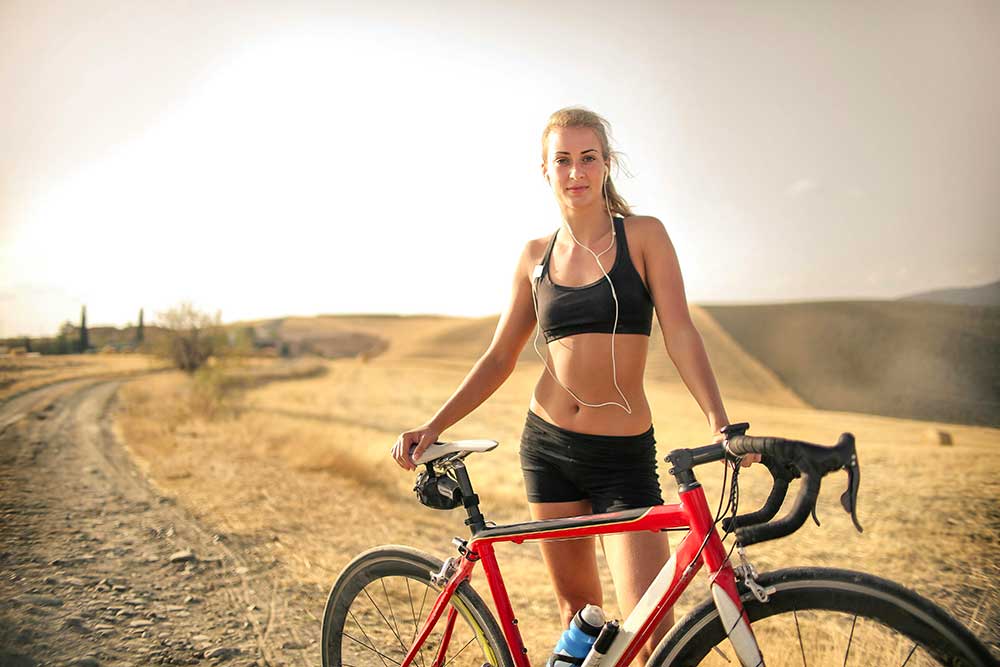

0 Comments